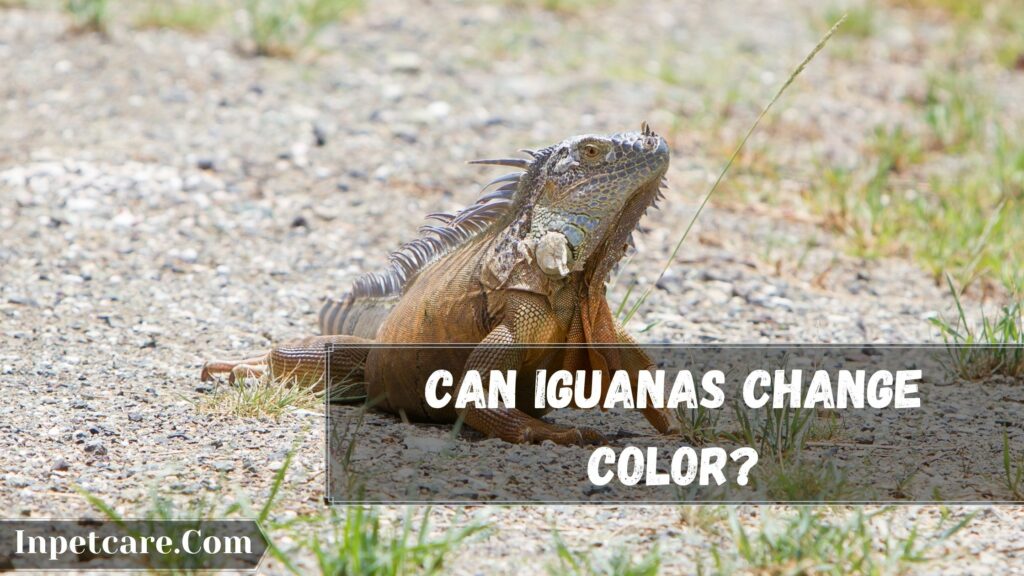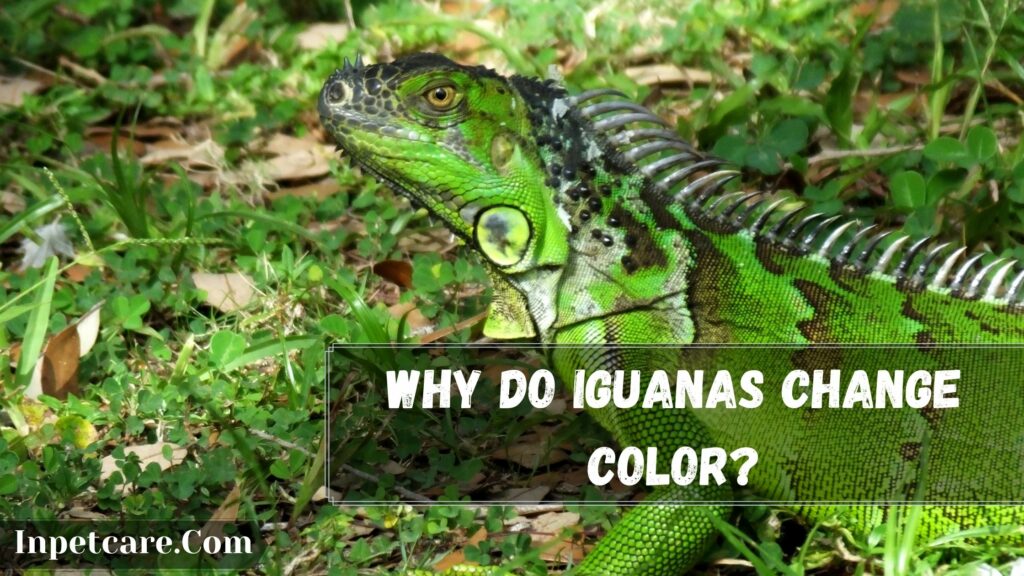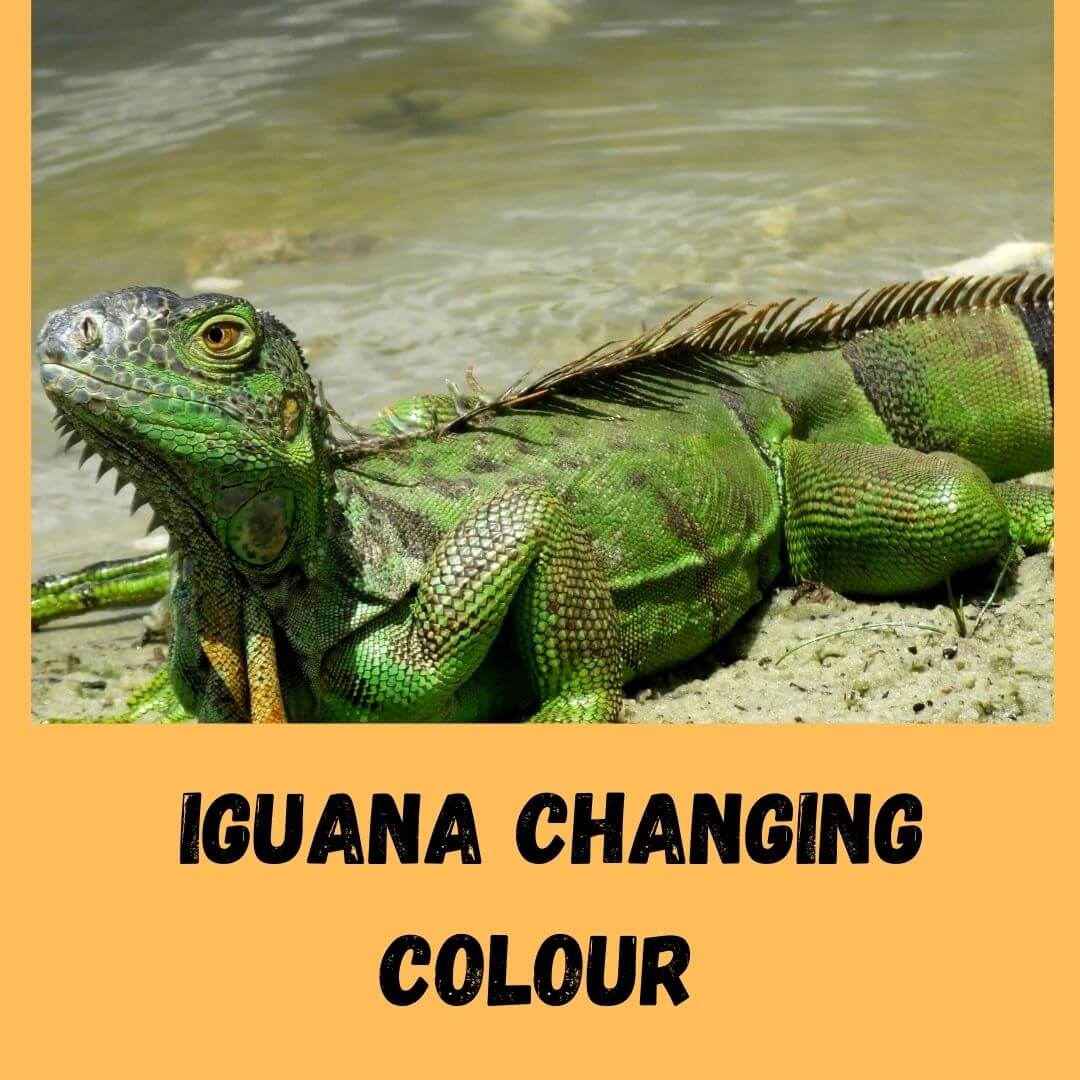Many Iguana owners get surprised when they see their Iguana changing colors. So can Iguanas change colors? Yes, they can. In this post, we will answer ‘why is my Iguana changing colors?’, and discuss ‘firing up,’ ‘firing down,’ and color change with age.
Post Contents
Can Iguanas Change Colors?

Yes. Iguanas can change their color. Iguanas can change color when they grow up, are exposed to specific environmental triggers or to communicate. Another way that your Iguana can change color temporarily is during the shed cycle.
Iguana color change can be caused just by growing older. Iguana hatchlings and juveniles usually have different shades of color than the adults. You should note that Iguanas have great ability to change color and change the color of their own will.
7 Reasons Why Do Iguanas Change Color?

Iguanas hatchlings and juveniles usually have bright green, grey, orange or red color, and it is hard to determine their adult color in the first few months. It will take hatchling and juvenile Iguanas several months before assuming their final and definitive color.
You would have already known the adult color of your Iguana around its first anniversary, and the adult color can be different from its hatchling or juvenile color. Another thing is that the patterns of Iguanas are also age-related, just like color. You will find little or no marks and spots on hatchlings, but they will start to show once it grows older.
Environmental Color Change
Adult Iguanas can still change their color through a process known as firing up. The mood of your Iguana due to its environment: Moods like stress, aggression, and fear can lead to your Iguana firing up.
These moods like stress and fear reactions of your Iguana can be caused by shipping, new environment, overpopulation, horrible living conditions, handling, or breeding. This firing up and down of an Iguana is based on numerous factors. However, some of the environmental conditions that can cause the firing up of your Iguana are stated below.
High Humidity
If your Iguanas are kept in an enclosure of higher humidity of about 70%, it can fire up. High humidity levels usually occur at night or in the morning. Activities of your Iguana: Iguanas have fired down colors while sleeping, while the color fires up when they are active.
High Temperature
If Iguanas are kept in an enclosure with a temperature of about 90-95 degrees Fahrenheit, it will fire up. However, you should avoid exposing them to high temperatures (over 100 degrees Fahrenheit) for a long time, leading to overheating.
Lighting
Iguanas are known to fire up during nighttime when there is little light. Iguanas will get darker colors, which are used for hiding from predators. Note: At times, some of these reasons are interlinked, and it is not entirely possible to attribute Iguana color change to a specific environmental trigger. For instance, high humidity occurs at night when there is little or no light, and it is the time when your Iguana is resting. It is also possible to be exposed to fear or stress during this period.
To Communicate
Iguanas are known to communicate through changing its color. Color change plays a vital role in relocating, mating & hiding for wild iguanas.
Firing Up
Firing up is another color-changing process of Iguana, based on their mood and environment. When your Iguana fires up, it usually indicates a state of alertness or reaction to the environment. When your Iguana sleeps, it is fired down, and its color will change to a darker tone at night.
New to Iguana? Check out the Iguana care sheet now! We listed all the things you need to know about Iguana as pets. Check it out now! You do not have to worry if your Iguana is always fired, or it never does, as it does not indicate anything is wrong with it. Many factors can cause your Iguana to fire up and down.
However, it does not mean that it is stressed, uncomfortable, or upset. Firing up mechanisms can aid camouflage, indicate behavioral state, communicate with other Iguanas, or respond to specific stimuli like smells, humidity, etc.
The firing up of colors is usually more intense in brightness for orange, red, and green Iguanas or a deep black or brown Iguana in a dark base. Furthermore, the fire down of the color’s ability of Iguanas is usually paler. Dark-based Iguanas with a color range between tan, brown, and grey often fire down.
Color Change due to Shedding
Like other reptiles, Iguanas shed their old skin and replace it with new ones. Some days after the shedding starts, your Iguana color becomes greyer or pale. This is a normal circumstance, and you do not have to worry. After a few days of your Iguana shedding its skin, it will turn back to its standard color.
Interesting Further Reading
- How To Make Your Iguana Like You? (5 Easy Ways)
- How To Keep Iguana Cage Humid? [5 Easy Ways]
- 3 Ways To Tell If Iguana Is Male Or Female
Dangerous Color Changes
You should also know that not all color changes are expected in Iguana. It is dangerous if you notice that only the toes or tail turn black. This color change is a sign of necrosis, and you need to visit your vet immediately for treatment. Notice that there are black spots on the body of your Iguanas that were not there before. You will need to see the vet for treatment as well.
How Can Iguanas Change Colors?
As we know iguanas are unable to change their color on their will, their colour changes are completely a reflection or a result of a sudden environmental change or underlying health issues.
Conclusion
After knowing can iguanas change colors and how iguanas can change colors, you might have all the ideas why your Iguana color is unusual. If you liked our Post then share it. Your one share can help many people understand can iguanas change colors and if so how can Iguanas change colors.

94% of pet owners say their animal pal makes them smile more than once a day. In 2007, I realized that I was made for saving Animals. My father is a Vet, and I think every pet deserves one. I started this blog, “InPetCare”, in 2019 with my father to enlighten a wider audience.
